
John Martin
Unknown Author- May 2007 Copyright Tate Britian

“7 Deadly Sins” Critique by Brittany Smith
“Why the color blue? Because I think sloth is more for those who are depressed and sad...not because of some medical condition...but because they sit there in self-pity. I wanted to illustrate that they have no desire to get up from their bed in the morning, to do anything at all (even if it's something they'd enjoy)...they have absolutely no motivation. I'm poking fun at the people that put themselves in that state of mind. The people who sit there "woe is me..." and cry and moan about every little thing that went wrong in their life. I think that's more of a deadly sin than the lazy. Hell, I'm lazy and it's not all that bad ”

Graphic Reality: Mexican Printmaking Today at Highpoint Center for Printmaking
By Stephanie Xenos
10.31.07:
If you’re looking for a connection to Mexico on Dia de los Muertos (Day of the Dead), be sure to include Highpoint Center for Printmaking on your itinerary. Walk in the door and you’ll be met by a selection of prints brimming with Mexican folk imagery woven into works on very contemporary themes. The show, Graphic Reality: Mexican Printmaking Today, features the work of about a dozen printmakers, most of them mid-career pros. Organized and curated by Artemio Rodriguez, Graphic Reality comes to the Twin Cities following runs at the International Print Center in New York and at Columbia College in Chicago.
Some of the most eye-catching works come from Rodriguez himself. His prints fill an entire wall of the gallery (though it’s a fairly small space). His imagery and style—black-and-white compositions without a speck of gray—evoke the so-called “father of Mexican printmaking,” Jose Guadalupe Posada. But like any family resemblance, the variations are what make the story interesting.
Rodriguez plays with Mexican folk images in clever ways. Will you see skeletons and religious icons? Yes, except that Rodriguez adds pop culture and political elements to the mix. Two examples are Super Muerto, a deathly superhero clad in cape and underpants, and Gluttony, a man with food-stuffed cheeks and fast-food logos tattooed on his arms.
Other artists in the show incorporate similar imagery, but in vastly different styles. If Rodriguez descends from Posada, then Oscar Camilo de las Flores may well trace his roots back to Hieronymus Bosch. Absorbing his dense, detailed prints requires some sustained attention. Like Bosch, Camilo de las Flores’ prints suggest a landscape at once timeless and historic, where human actions—both banal and grand—take on a mythical quality.
In the introduction to the show, Rodriguez says that the printmaking community in Mexico is “fresh and alive and diverse,” taking its creative inspiration from many sources. Rodriguez and Camilo de las Flores are two variations on this theme. Other artists in the show follow very different threads to very different, but equally compelling conclusions.

About the Artwork
Spanish Surrealist Salvador Dali (1904 – 1989) portrays the Greek myth in “Metamorphosis of Narcissus,” telling his story through symbolism and imagery in his well-known Paranoiac-Critical style. In the story, Narcissus falls in love with his own reflection, forgets to eat or sleep, and is immortalized where he died as a flower by the gods. Dali, a renowned 20th century artist, utilized emotion such as paranoia in his artworks to prompt the brain to connect images that would not otherwise be rationally linked.
Author Unknown

Posted By:Ladworth
Posted On: 10/30/2004 3:52 PM (Updated on 10/30/2004 3:55 PM by LVH)
Subject: I saw . . .
...the red leather couch and that leopard skin throw pillow before I saw anything else!
What does that say about me?
This painting speaks of mystery:
*where has the woman gone to?
*or...was there ever a woman!
*is this a 'before' or 'after' picture?
*and how is it that I detect the presence an overpowering perfume
when none is pictured?
Aside from all that, I especially like the balance created by the bright hole
in the open-toed shoe and the handcuffs.
Best of all--I can almost FEEL all of those wonderful textures!




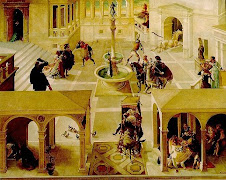









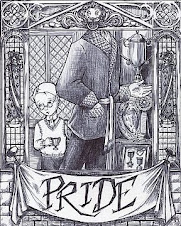






















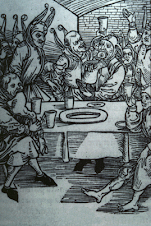





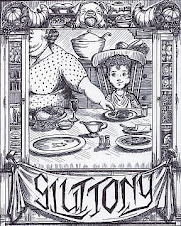










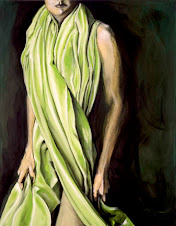



No comments:
Post a Comment